The backup daemon operates on the box level of an unmanaged box, a CC-managed box, and a Control Center and always must be configured on the box level. Configure the Backup Daemon to perform scheduled backups on storage that can be either locally on your firewall / Control Center or on remote Cloud storage.
Step 1. Enable the Backup Daemon and Create a Storage Backend
Log in to your Firewall or Control Center on box level.
Go to CONFIGURATION > Configuration Tree > Infrastructure Services > Config Backup Daemon.
Click Lock.
For Enable Backup Daemon, select Enable.
(Optional) If you want to change the default preset for Log-level, select another entry from the list
Click + for Storage backends.
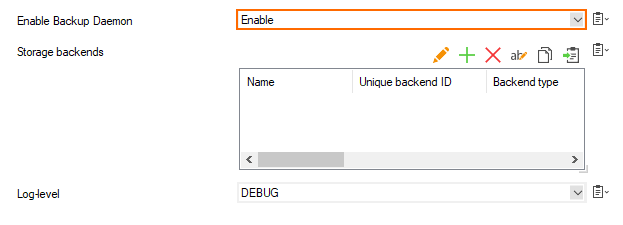
Step 2. Configure the Storage Backend and Create a Backup Job
The Storage backends window is displayed.
For Unique backend ID, enter a unique name for your back-end storage.
For Backend type, select whether to create a local or remote storage:
Local – Allocate space storage on your firewall/Control Center.
S3 Bucket – Allocate space on an AWS Cloud storage. This option will enable the edit fields for Backend user and Backend key.
Azure Blob – Allocate space on an Azure Cloud storage. This option will enable the edit fields for Backend user and Backend key.
In order to access the storage space, your firewall/Control Center must be authorized. You have two options:
(Option #1) Authorize using explicit credentials
For Credential type, select Explicit.
(Option #2) Authorize using system Cloud credentials.
For Credential type, select Use system cloud credentials.
If you have selected remote backend type (S3 Bucket, Azure Blob):
Add the name of the Backend user.
Add the password of the Backend key.
Add the path for the Backend url so that the backup daemon can connect to the storage space. This is a mandatory field.
Local Storage Example AWS Storage Example Azure Storage Example /myLocalStorage https://s3.amazonaws.com/bucket-backups containerbackup:/folder-backups 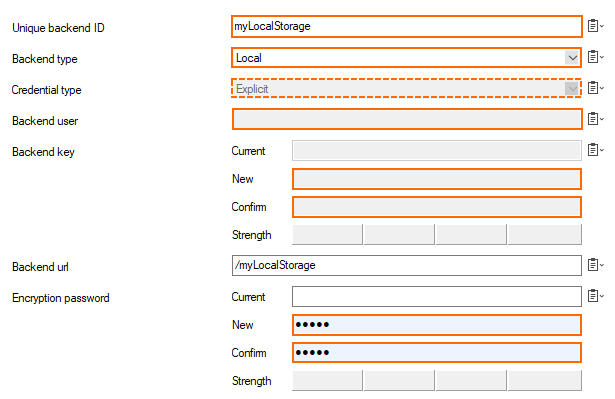
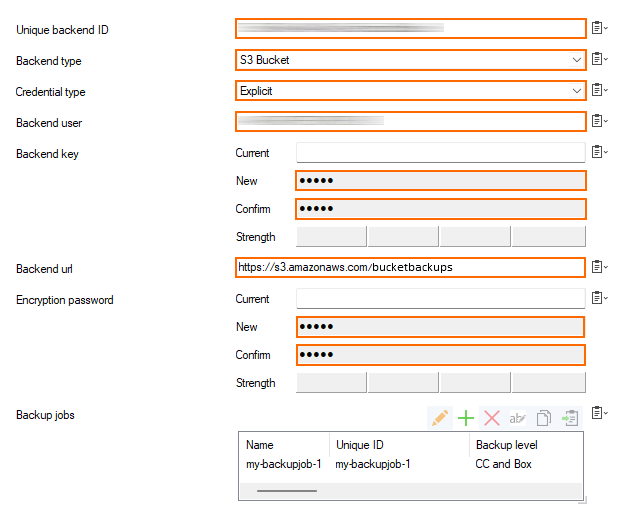
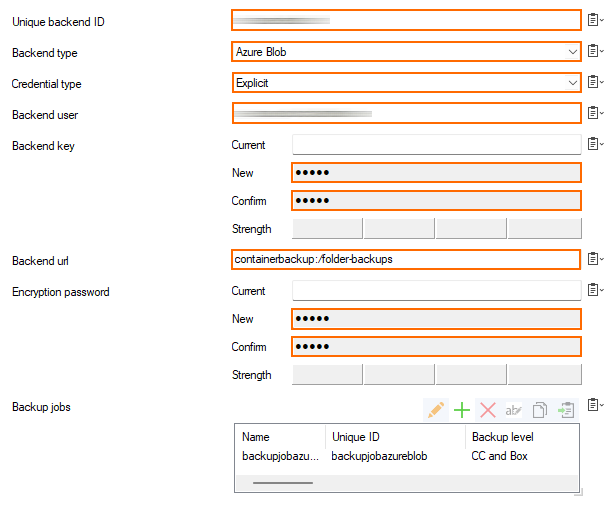
For encrypting your backup, you must enter an encryption password. The indicator for Strength should display a green color:
If you have already configured a valid password anytime before, the edit field for Current will display multiple black bullets hiding your current password.
For New, enter your new password.
For Confirm, re-enter the password to check whether it matches the previous input for New.
Click + for Backup jobs.

Step 3. Configure and Schedule the Backup Job
The Backup jobs window is displayed.
Enter a unique name into the edit field for Unique ID.
Select on which level the backup must be performed.
Box – The backup will be created for a firewall's/Control Center's configuration on the box level.
CC – The backup will be created for the configurations of all Control Center-managed firewalls.
CC and Box – Both previous options for Box and CC will apply.
For Compress backup, select Compressed if you want to have the backup compressed, otherwise select Uncompressed.
For Execution triggers, click + to create a new execution trigger:
The Execution triggers window is displayed.
Enter the timestamp in Unix-like time format following the template 'Minute - Hour - Day of Month - Month - Day of the Week', e.g. every 31st of December at 18:00:
0 18 31 12 *
Click OK.
For User tags, click + to add tags to the backup job.
The User tags window is displayed.
For tag, enter a single tag into the edit field.
Click OK.
(Optional) If you want to add more tags, repeat all previous steps starting at point 7.
If you want to modify the retention time of the backups, configure the following parameters. Leaving all fields blank or setting all edit fields to '0' will keep the backup unlimited.
Retain last – Keep the #n most recent backups. (The default value is 5).
Retain hourly – For the last #n hours with a backup, keep the most recent for each hour.
Retain daily – Keep the latest #n daily backups.
Retain weekly – Keep the latest #n weekly backups.
Retain monthly – Keep the latest #n monthly backups.
Retain yearly – Keep the latest #n yearly backups.
Retain tagged – If you want to exempt certain backups from being deleted after surpassing the configured limits above, click + to add the Retain tag that must match at least one of the User tags. If you want, you can add further retain tags.
Click OK.
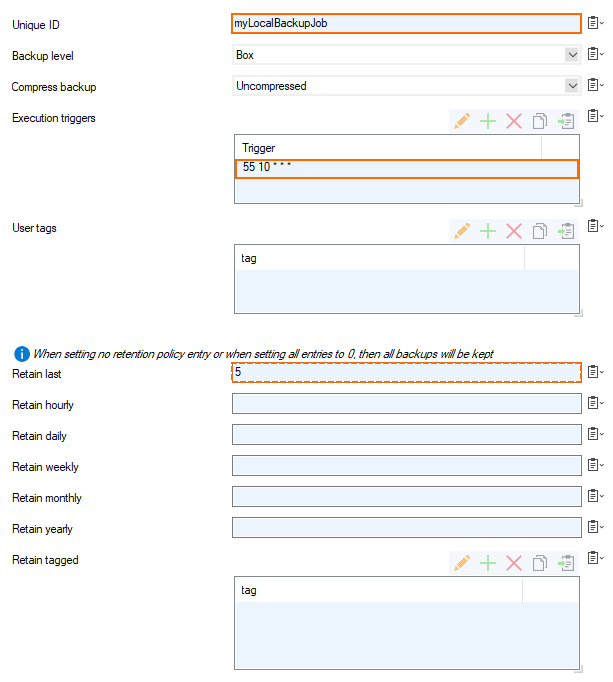
Click OK.
Click OK.
Click Send Changes/Activate.
You have now configured the backup daemon to perform backup jobs.
